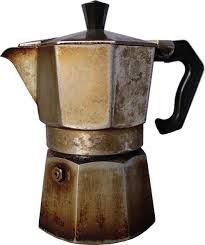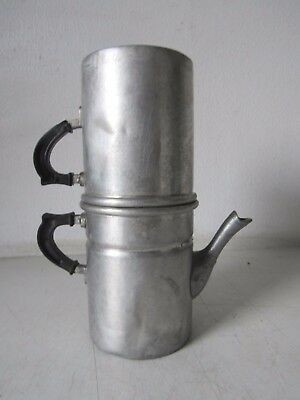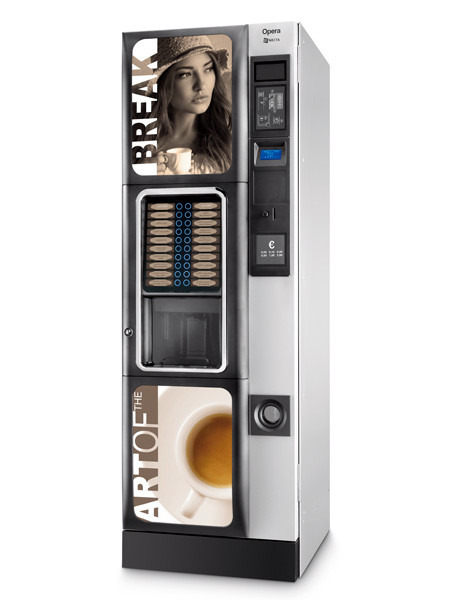The Italian way of coffee
Hello dear readers, this time we are going to talk about something that is very dear to a typical Italian society. This is a ritual that most Italian people really care about. The thing about this ritual which makes it so special is that it is considered as something to do first thing you wake up in the morning, before you even have breakfast. Now, apart from our health instructors aka doctors would say about doing this ritual before breakfast (on an empty stomach), many do it selflessly believing that it will give them the big start on their day. So if you have any plans on coming to Italy as a country or even to some Italian cities in particular, for sure you will have to face this ritual in your day to day life and you have to come to terms with it as well. Have in mind that this ritual is ingrained so to speak in the very DNA of the Italian individual, so much so that some of them actually do it several times a day. I suppose by now some of you have already guessed what it is that I am reffering to, but I also think that another percentage of the readers who might not know what the topic is. To those folks who haven't yet found out what I am writing about, well, today's topic is coffee or as they say in Italian, caffè. Attention! Not any other coffee though, I am talking about the infamous "Italian coffee". Continue reading and you will find about why I put Italian coffee in quotation marks.
Meaning of coffee in Italian society

Now since I have been living in Italy for a long time, I would like to share in this paragraph some of my thoughts and the things that I have noticed when it comes to the meaning of coffee for the Italian society. So most of the things that I'm going to write about come from my experience, what I heard from friends and family, and what I felt in terms of rituals and customs around coffee drinking and coffee making here in Italy. Many are the occasions where I heard friends saying that if don't drink coffee after lunch, well that means that you had a 'half-lunch'. This emblematic phrase just goes to show how coffee has become a part of the meal. Its absence makes the lunch a half meal, as if there is something important missing. Caffè, as it is called in the Italian language, is the right thing to have in order to end your lunch on the right note. Again, I don't know what todays health practitioners would say about drinking coffee at the end of the lunch and what health benefits or alarms it would consecutively have on the human body. One thing is for sure, coffee drinking is massively expanded among the Italian society regardless of the pro and cons.
When I first joined the university in Italy, in the beautiful city of Perugia, I was taken off guard by the simple but yet imposing customs of my fellow university collegues and their coffee drinking habits. The shock was greater because I was coming from a society where drinking coffee is a social event where you would invite friends, family and neighbours to share some time and space where every one simply exchanges stories and make announcements (I am originally from Ethiopia, country where I have been born and raised). If you want to read about The Ethiopian way of coffee I suggest you read this blog post about coffee in Ethiopia. Returning to my fellow university collegues, I noticed that they were drinking two and some three coffee servings per day. Some said that it was helping them to be active and dynamic while others use to say it would keep them from falling asleep during lectures. Though very few of them admitted that they did it out of habit, especially the ones who smoked cigarettes. The conclusion that I was forced to make is that this people are using coffee as a substance to alter their physical-mental status. So coffee is basically reckoned as a drug. This is an affermation which may be understood if one gets the idea that anything we put inside our body has an effect of some kind, be it in long run or even in the present moment. It is also known that generally speaking taking drugs is socially condemned. But clearly coffee is a drug but instead of being condemned, on the contrary it is one of the few 'socially accepted drugs'. So to the folks who find themselves chugging multiple servings of coffee per day I would say to consume this drug with care reminding oneself that it is crucial to use it in moderation.
How to prepare coffee at home
Well if you have the chance and commodity to prepare coffee at home, let me tell you then how it is made in the Italian way. Though there are some differences as you go from one Italian region to the other, I would say that it is generally accepted to make coffee at home using a Moka. A Moka is the kitchen appliance used to prepare coffee at home designed by the famous Alfonso Bialetti. No wonder that the most famous Moka brand is Bialetti which derives directly from the surname of the designer who invented it in 1933 and then was distributed all over the world.

A very old Moka, dear to all coffee lovers out there.
First of all you will notice that the Moka has three parts: the first is the bottom part which will be filled with cold water, the second part is the filter where you need to put the coffee powder in and the third part is the container where you will have your coffee ready. So you need to assemble this three pieces together and put it over the gas burner or the electric stove you have. Here are the steps to prepare coffee with a Moka:
- Take the bottom part of the Moka and give it a good wash before using it. Then pour cold water but don't fill it to the brim. The water should be just under the 'water marker' sign which can be easily seen both from the inside and outside of this bottom part of the Moka.
- Take the second component, the filter, and put it inside the bottom part. When you do so be sure there no water coming up through the filters holes. If this happens it means that there is too much water so get rid of the excess water. Once the water level is correct fill the filter with coffee powder of your choice. Depending on your taste you can find finely grinded or coarsely grinded coffee. Both types should be ok to prepare coffee with the Moka. As you fill the filter with coffee powder do not press the coffee in as you might end up with a very bitter coffee often too strong even when drank with milk. So my suggestion is that you loosely fill in the filter making a pyramid of coffee powder. Once you make it a couple of times you can adjust with how much coffee you want to put.
- Now place the third component on and assemble it with the rest of the components, making sure that you have tightened it well. Once you have this done put it on a low heat as it is guarantees a slower boil and therefore a more fragrant cup of coffee.
- It usally takes around five minutes for the water to boil and evaporate through the filter (full of coffee powder) and end up in the upper component of the Moka where all the coffee is gathered. Once all of the water has evaporated from the bottom and therefore the coffee is ready you can hear a 'bruk bruk bruk' sound together with hot steamming vapor coming out from the upper component of the Moka itself. Now your coffee is ready to be served.
Dos and don'ts with a Moka
Be carefeul not to use any detergent when you wash the Moka. It is enough to rinse it under running water. If you were to use detergent you would remove all of the coffee scent and flavor the Moka has acquired during all the time you have used it, which is the element that gives the coffee its distinctive taste.
One more thing you must do is once the coffee is ready, before pouring it in the various cups, you must give it a good mix with a small spoon. This helps to have an even taste of the coffee when you are drinking it.
An alternative to the Moka, the 'napoletana'
As I said coffee making at home may differ from one Italian region to the other. Though the majority of people use the Moka, in the southern part of Italy it is common to use a local coffee maker called 'napoletana' (which mean from Naples, this brings me to the conclusion that Naples is the place where this kind of coffee making trend originates from). Also in this case the main principle is the same: you have a bottom component where you put cold water, a filter to put the coffee powder and a third component where you will have the coffee ready to be served. The only fun thing about the 'napoletana' is the fact that once the coffee is ready and you hear the 'bruk bruk bruk' sound, you must get a hold on the two handles and flip the coffee pot upside down.

Coffee in a bar
In the Italian way of life it is a common practice to be invited for a cup of coffee at the nearby bar (bear in mind that a bar in the Italian context is a place where you can find both hot drinks and cold beverages including alcoholic drinks). What happens is that you get in the bar and you ask for the coffee of your choice. Here since it is the barista who is brewing your fresh coffee you have plenty to choose from. I believe the most common request is an espresso, but nevertheless you have ginseng coffee or caffè corto (which means 'short coffee', so expect a highly concentrated cup of coffee). Another option is the so called caffe doppio (which means a double coffee, usually it refees to a double espresso). My favorite being the mocaccino coffee, trust me when I say that there are numerous kinds of coffee servings.
The common caffè espresso is served in a small cup, made especially for an espresso. Often times you will be given a glass of water half-way full or you can ask for it without paying anything extra. Unlike the Ethiopian way of coffee drinking, the Italians rather drink their coffee quickly at times even with one shot. But expect to engage into a conversation while and after you drank your coffee. So on this note make an effort to learn this Italian phrase... "Andiamo a prendere un caffè? ", which literally means "shall we go for a coffee? ". It is a friendly way of inviting someone for a coffee. A lot of good relationships begin with asking this question to a person, so next time you are in Italy don't be shy and invite perhaps a stranger for a cup of coffee or simply engage into a conversations as you find yourself at the bar, in front of the barista.
Coffee at the vending machine
This is a very recurrent phenomenon that I witnessed here in Italy. This goes to say that vending machines are everywhere. I have seen them in the common areas of my university, in all of the student dormitories I have lived in here in Perugia. A simple caffè espresso is quite affordable, it can cost you from €0. 40 to anywhere €0. 70. The only thing I admire about this way of consuming coffee is the practicalness because at any given time of the day your need of coffee can be satisfied in no more than one minute (time lapse from the moment you press the button and the vending machine makes your coffee). But for the rest there is nothing more that I can appreciate about vending machines. The other day I attended an event with the objective of raising awareness saving the planet and the plastic pollution. Among the crowd there was a guy who was saying that he is never going to have coffee from the vending machines due to the fact that the plastic cups in which coffee is served is a polutant to our planet, therefore it is eco-friendlier to have coffee in a ceramic cup, at the local bar. So I leave the choice to you, my reader... Coffee at the vending machine or at the bar...

Thank you for taking the time to read this blog post. I hope you found it interesting enough to share with your friends and family. Cheers!
Photo gallery
Content available in other languages
- Español: Café a la italiana
Want to have your own Erasmus blog?
If you are experiencing living abroad, you're an avid traveller or want to promote the city where you live... create your own blog and share your adventures!
I want to create my Erasmus blog! →



















Comments (0 comments)